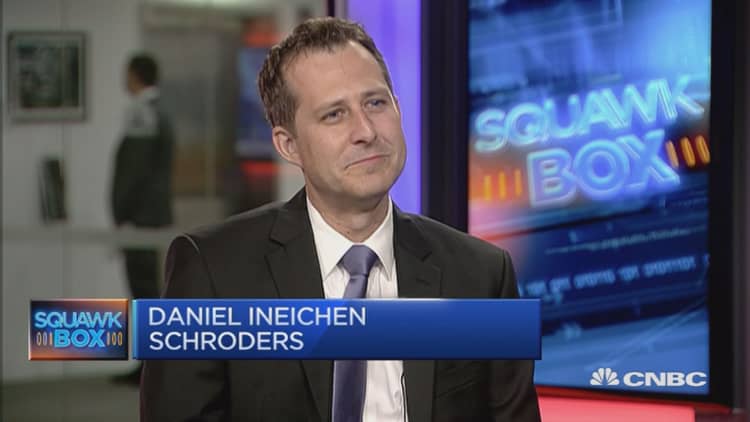
Catastrophe bonds are yielding over 5 percent in an environment of ultra-low interest rates, but market-watchers warn investors need to take care before entering the $25 billion market.
Catastrophe bonds — or cat bonds for short — were created in the 1990s as a means of protection for insurance companies if a major natural disaster occurred and they needed to pay out large premiums. Investors typically receive a high yield on the bonds, but will have to pay out if a specific catastrophe occurs. The main risks covered are hurricanes and earthquakes, particularly in the U.S., but also Japan.
One attraction of the asset class is that it can help diversify the mix of an investment portfolio, as cat bonds typically have a low correlation with the broader financial market or economic trends. In addition, cat bonds have consistently yielded above 5 percent over the last three to four years, according to Daniel Ineichen, Schroders' head of insurance-linked securities (ILS).
"It is certainly a market that is bit different than the mainstream asset classes, but it is an interesting asset class because it still has high yields … And it is actually a market that is very uncorrelated to any developments that we have seen in the financial industry," Ineichen told CNBC on Tuesday.
Main risks covered by cat bonds
- US hurricanes (particularly in Florida)
- US earthquakes
- Japanese earthquakes
- Winter storms and floods in Europe
However, there are concerns that low interest rates — 10-year U.S. Treasury notes have yielded below 1 percent for most of 2016, while 10-year German Bund yields are in negative territory — may push investors to buy catastrophe bonds without fully understanding the risks.
Treasury yields
U.S. Treasurys
"The product is actually mainly for institutional investors so far. I think a lot of them have done homework that is why the trade is not overcrowded at the moment. It is a niche market," Ineichen told CNBC.
"We are talking about a $25 billion market for cat bonds. The wider ILS market is $75 billion in size. So it is still a small market; small percentage allocation; very strategic. Before people allocate we see that they do homework of 12-18 months, so it is longer lead times than in equities," he added.
The market for catastrophe bonds and ILS has grown each year since 2010, following a falloff after the global financial crisis of 2007-08.
Recent issues include a $70 million catastrophe bond sponsored by German insurance firm Allianz. It was launched this month to provide reinsurance cover for the risk of warm winters in Europe.
Ineichen said low insurance coverage meant few of the losses associated with the recent tragic earthquake in Italy would be covered. Schroders estimates the economic losses at 10 billion euros ($11 billion) for the disaster that killed at least 290 people. Only around 2 percent of the economic losses will be insured, with only one catastrophe bond exclusively covering Italian earthquake risks, according to Ineichen.


